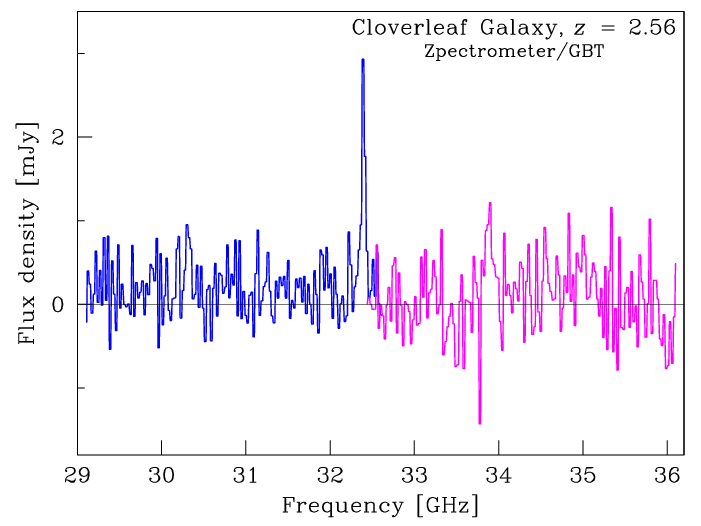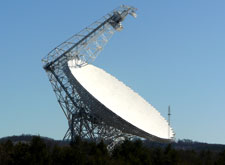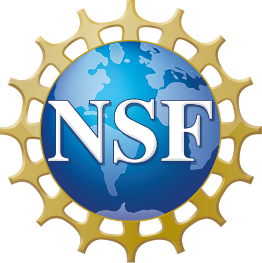First High Redshift Detections with the Zpectrometer
The Zpectrometer is a moderate-resolution analog lag correlator spectrometer that covers the GBT's Ka-band receiver's entire available bandwidth. As reported in earlier Newsletters (January, 2008, p. 22 and October, 2007, p. 21-22.), it is designed principally for galaxy searches in the CO J = 1-0 transition from redshifts 2 to 3.5, and also other redshift ranges in other lines. The figure shows a spectrum of the CO J = 1-0 line from the gravitationally lensed "Cloverleaf" quasar at z = 2.56, taken in support of a previously approved investigation of this source (Vanden Bout, Solomon & Maddalena 2008, in preparation; GBT proposal 5A29). The integration time is slightly less than two hours. The intensity is normalized to the flux density of 3C48. The Zpectrometer has four independent sub-bands, two of which are shown in the Figure in different colors. The line is close to but not at a sub-band edge; the end channels of each band have been trimmed in the spectrum, leaving the small overlap between sub-bands.

No baseline has been removed from the spectrum. The Zpectrometer naturally produces flat baselines with its combination of a true correlation receiver architecture, subreflector nodding, and position switching to remove residual optical offsets. The system linearity is excellent, and sub-band edges align even on bright sources. This spectrum received no corrections in post-processing other than division by a quasar spectrum to correct passband gain variations. Much longer Zpectrometer observations show very flat baselines with appropriately lower noise, but centered on zero flux. The continuum offset in the spectrum is likely to be from the source rather than an instrumental artifact. An advantage of the Zpectrometer's broad bandwidth is that it covers the entire band without tuning, so it is practical to difference spectra from two nearby sources by position switching. There is no sign that we detected lines from the source we paired with the Cloverleaf.
It is anticipated that the next GBT Call for Proposals will invite community access to the Zpectrometer for next winter. By agreement with NRAO and NSF, Zpectrometer observations in the first year will be in collaboration with the instrument team, with a transition to NRAO-supported facility instrument status envisioned for the following year. The Zpectrometer was constructed with NSF grant AST-0503946 to the University of Maryland as part of a collaboration with the NRAO.
A. Harris, A. Baker, P. Vanden Bout, P. Solomon, R. Maddalena, S. Zonak, K. Rauch, G. Watts, R. Creager, K. O'Neil, and P. Jewell.



